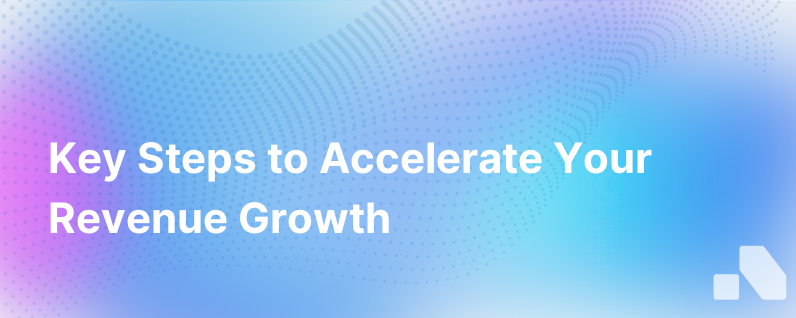
In today's highly competitive market, B2B companies are constantly searching for tactics to not just maintain but accelerate revenue growth in a sustainable way. Revenue acceleration is essential for survival and can help power a business to new heights. But what are the strategic steps that lead to this acceleration? Let’s dive into actionable and proven steps that can be the catalyst for ramping up your B2B sales with precision.
Step 1: Analyze Your Target Market
Before you make any moves, it’s essential to understand your target audience deeply. Analysis should encompass more than just basic demographics; it should explore client pain points, buying behaviors, industry trends, and economic shifts. Armed with this knowledge, you can craft bespoke solutions and value propositions that speak directly to your audience's needs.
Step 2: Enhance Your Value Proposition
In a crowded market, differentiation is key. Your value proposition should not just resonate with your target audience; it should also clearly delineate how your product or service stands out from competitors. Addressing explicit and latent needs can significantly improve your offering's attractiveness and justify premium pricing.
Step 3: Streamline Sales Processes
Efficiency in your sales process is no mere operational nicety; it’s a linchpin in accelerating revenue. Streamlining processes involves the integration of sales and marketing automation tools, CRM systems, and other technologies that reduce redundancy, automate menial tasks, and allow sales reps to focus on building client relationships and closing deals.
Step 4: Invest in Training and Enablement
Your sales team is on the front lines of revenue generation, and as such, their skills and knowledge should be continually honed. Investing in sales enablement tools and ongoing training ensures that your team is equipped with the latest strategies, product knowledge, and sales methodologies.
Step 5: Foster Strong Customer Relationships
Building and maintaining robust customer relationships engenders trust and loyalty, which can lead to repeat business and referrals — both critical components of revenue acceleration. Personalized communication, responsive customer service, and a thorough understanding of each customer's business are paramount.
Step 6: Implement Strategic Pricing
Pricing strategies can significantly impact your bottom line. Dynamic pricing, value-based pricing, and volume discounts are just a few tactics that can attract new clients while maximizing the revenue from each sale. It’s also vital to assess your pricing structure regularly and adjust it according to market conditions and customer feedback.
Step 7: Explore Up-Selling and Cross-Selling
There’s considerable revenue potential within your existing customer base. By identifying additional problems your solutions can solve, you can target current clients with new offerings (cross-selling) or premium versions of the products or services they already use (up-selling). This approach not only boosts sales but also reinforces customer retention.
Step 8: Measure, Optimize, Repeat
A data-driven approach to sales ensures you can monitor what’s working and what isn’t, refine your strategies accordingly, and replicate your successes. Implementing a robust analytics system allows you to track key performance indicators (KPIs), generate insights, and continuously optimize your sales process for better outcomes.
Step 9: Nurture a Performance-Driven Culture
The sales team’s mindset can make or break your revenue goals. Cultivating a performance-driven culture, incentivizing employees with bonuses, commissions, and recognition programs, and setting clear expectations can all contribute to a more motivated and productive sales force.
Step 10: Embrace Adaptability and Innovation
Lastly, the business landscape is always changing, and your ability to adapt to new realities – whether they are technological advancements, shifting buyer needs, or competitive dynamics – is crucial. Encourage innovation within your team, stay abreast of industry trends, and always be ready to pivot your strategies to stay ahead of the curve.
Putting It All Together
Revenue acceleration in B2B sales is not a single strategy but a combination of carefully executed, interrelated steps. It demands an in-depth understanding of the market, a differentiated value proposition, streamlined processes, skilled sales teams, strong customer relationships, intelligent pricing, and a culture focused on performance and adaptability.
Moreover, remember to leverage tools and platforms that can make your journey toward revenue acceleration more manageable. For instance, AI-driven platforms, like Aomni, offer real-time insights and boost sales team performance by providing actionable competitive intelligence, account research, and personalized sales content – all within minutes and with zero effort required.
Ultimately, accelerating revenue in a B2B context is a continuous process that requires diligence, strategic planning, and an unwavering focus on delivering value to your clients. When these pieces align, the path to increased sales and revenue becomes a road paved with opportunity and growth.